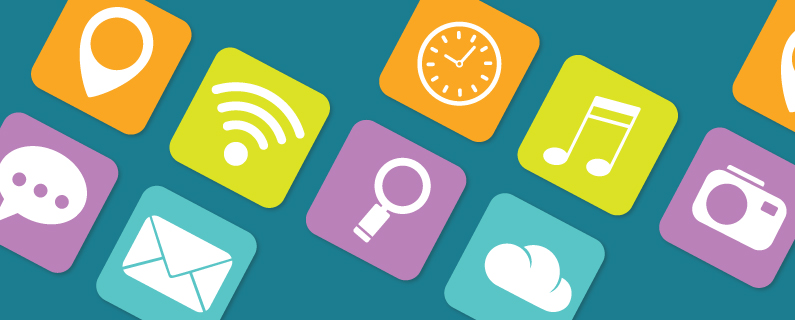
A few weeks ago I wrote a blog outlining the evolution of a few social media sites. This got me thinking more about the transition to mobile and how things have changed quite a bit in the world of social sites. While Facebook and LinkedIn started as desktop sites, today the majority of their users now socialize on mobile. This switch demands a sleek and simple experience for on-the-go social sharing.
Unfortunately, when it came time to make the switch, content and feature heavy social platforms like Facebook and LinkedIn had so many functions this proved to be a difficult transition. Even after multiple design changes and updates, the mobile application was still too clunky and crowded in comparison to single function apps like Snapchat and Instagram.
Facebook was the first to consider breaking up their platform and creating unique apps for each function. One of the first functions to break out as an individual app was Facebook Messenger (which now boasts over 800 million monthly users). If you have the Facebook application on your phone this is no surprise now, but at the time people had mixed emotions about having to download another app just to read Facebook messages on mobile.
This breakdown of Facebook into apps by function is an attempt to make each feel easy to use and simple. Facebook has tested a few outside apps and the long term plan is to eventually break down the site into more apps. Facebook has also gone the direction of buying applications for other functions like photo sharing app Instagram and a now deceased Snapchat-esque application called Poke that allowed users to share photos that would quickly be deleted. The long-term plan is to make the mobile experience as efficient as possible.
“One theme that should be clear from our work on products like Messenger, Groups and Instagram is that our vision for Facebook is to create a set of products that help you share any kind of content you want with any audience you want.” – Mark Zuckerburg
Another social giant that has taken to creating apps for every functionality of the site is LinkedIn. LinkedIn has created a full suite of applications including Job Search (which is pretty self-explanatory), Pulse – a daily news source based on your connections, Groups – a place for smaller conversations and content sharing and an additional 6 apps that all support functions of the web version of the social site. The goal is to make LinkedIn easier to use from a mobile device, but how efficient is switching between applications?
Personally, my first experience with this mobile app splintering was met with disdain and general annoyance. If I want to use a function of a social site like Facebook or LinkedIn without downloading ANOTHER app, I should be able to right? Well, I can see the argument from both sides. As irritating as it is to be forced to download another app for a function I expect from Facebook or LinkedIn, the separation of functionality does make each part of the site easier to use.
This is an important lesson to consider when planning your own website. Your site absolutely has to be mobile responsive or people will navigate away and never look back. Consider the amount of information you put on your website and how that might translate to a clunky and difficult mobile experience. We can also learn from these social giants how to prioritize what people want from your web presence. If the primary purpose of your website is to get people to schedule an appointment, don’t make it hard. Have a strong sense of what the primary function of your website is and make it as easy as possible for people to do just that.
[su_web_audit]